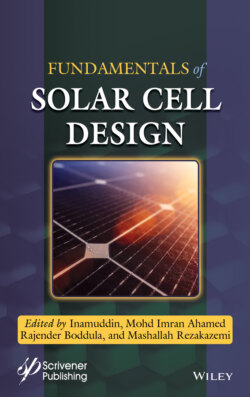Читать книгу Fundamentals of Solar Cell Design - Rajender Boddula - Страница 31
2.1.2 Classification of Plasmonic Nanostructures
ОглавлениеSPR are sensitive to the geometry of device, material, and light-matter interaction. The shapes of nanostructure can be classified as sphere, thin film, star, core-shell, disk, cavity, cage, etc. [25]. The plasmonic metal nanoparticles or thin films are used to get maximum absorption of light in absorbing layer. SPRs can be tuned to obtain desired frequency by using specific grating. The plasmonic nanostructures such as metal nanoparticle or thin film are mainly used in plasmonic solar cells that depend on the design and method. The most frequent and widely used design is the deposition plasmonic nanoparticle at the top surface of PV device. The light is scattered by the SPR in all directions. This increases the overall absorption in solar cells. The core (metal)–shell (dielectric) designs are also used to absorb more light. The other design of plasmonic nanostructure is depositing a nano-sized thin film of metal on or below the semiconductor layer. The sunlight generates electric fields inside the absorber layer and electrons can be collected as a flow of current [26–28]. The schematic representation of plasmonic solar cell with nanoparticle and thin film configuration is shown in Figure 2.3.
Figure 2.3 The utilization of plasmonic nanoparticle (upper) and thin film (lower) for solar cells.
